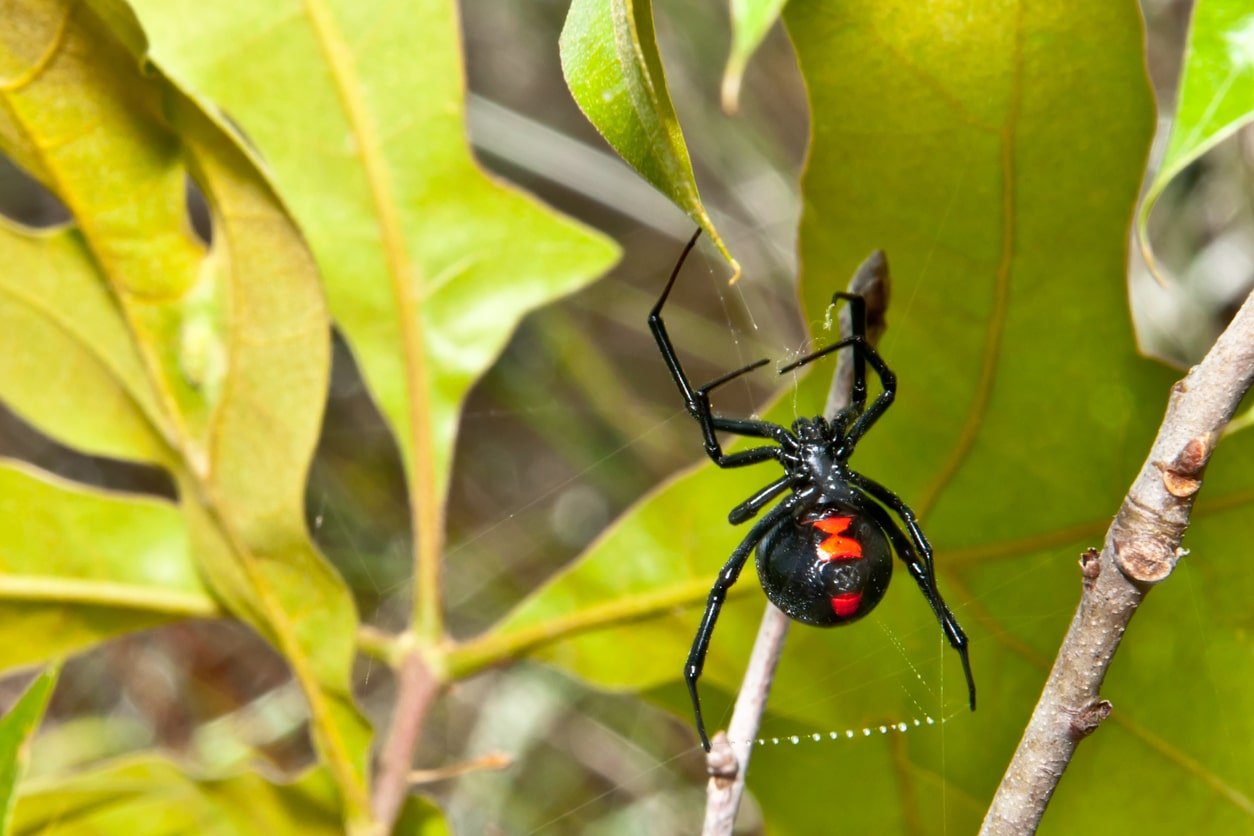Dominican Republic Bugs Which Bite & Sting: 19 Nasty Insects You Could Meet
You must be thrilled about that Caribbean holiday you’ve been dreaming about for months! And, of course, the Dominican Republic is one of the best choices for a holiday in the sun.
With its pristine white sandy beaches, turquoise waters, and world-class resorts, the Dominican Republic is a fantastic spot for a fun-filled vacation. You’ve probably already marked down all the best places to visit, and will be looking forward to dipping your toes into the warm Caribbean Sea. But have you checked whether there are any Dominican Republic bugs or other harmful insects that could cause you issues during your vacation?
Luckily we’ve done the research for you! Below you’ll find a list of some of the nastiest Dominican Republic bugs and insects that you should keep an eye out for while enjoying your getaway.
From tiny sand fleas to giant centipedes and tarantulas, here’s 19 Dominican Republic bugs to look out for while vacationing.

19 Nasty Dominican Republic Bugs That Bite & Sting
1. Horse Wasp
The Horse Wasp or Paper Wasp is common in many countries, including the Dominican Republic. Yellow and black in color, they generally do not pose a threat to humans. But, they can get pretty aggressive if they feel any danger.
Horse wasp stings are positioned at 1, the lowest number in the Schmidt Index of pain from insect bites, which ranges from 1-4.
That doesn’t mean a sting won’t hurt though. In fact unlike other wasps, horse wasps sometimes sting multiple times in a single attack which can be very painful, and may even cause fatalities in people with severe allergies.
Common side effects include swelling, a feeling of tiredness, breathing difficulty, and loss of consciousness. If stung, it is best to seek medical help.
Paper wasps build grey, paper-like nests, usually in trees and vegetation. You can also see their nests in garages or under the eaves of homes.
So we suggest you avoid walking near their nests, and if you do, then walk away!

2. Mata Cacata
Mata Cacata is a parasitic wasp with a dazzling bluish-black color. These wasps are nicked Tarantula Hunting Wasps as they hunt these huge spiders and use them as a host for their larvae.
According to the Schmidt index, the sting of this wasp is considered one of the worst in the world with a 4 of 4 intensity. In fact the sting of one of these wasps is comparable to the sting of a bullet ant in South America. Imagine that!
Although you know how painful these creatures are, there is no need to panic. They are not aggressive to humans. Just try to stay clear of them, and they should leave you alone.
These wasps are commonly found near the flowers they feed and on the ground where they hunt. So keep your eyes open.
You shouldn’t need to worry about them swarming you either, as they do not form colonies.

3. No-see-ums
Another bug in the Dominican Republic are Noseeums, also called the biting midge. As the name suggests, these are teeny-tiny little bugs that are less than ¼ inch long. In Dominican Spanish, they are called Mayes or Jegenes.
These bugs are so tiny that you cannot see them, hence the nickname, No-see-ums. In fact you often can’t feel their bite immediately as these little creatures suck up your blood before you even realize you have been bitten!
Although these little bugs’ bite cannot be felt, the itching that follows can be horrendous. As a trophy, you will be left with a red blotch and some uncomfortable itching that might last a week!
These little blood-sucking vampires are usually found in damp areas like beaches, marshlands, etc. And visitors from Punta Canta frequently report being bitten by them. So some some strong insect repellent while visiting the DR may be a good idea.

4. Mosquitos
Mosquitos are actually one of the most dangerous Dominican Republic bugs and like most places in the world, they’re abundant. These tiny fragile insects can transmit viruses and parasites, and can cause the spread of many diseases.
Mosquito bites are itchy, but more concern lies in the diseases they can carry. While hotels and restaurants in the Dominican Republic tend to be mosquito controlled, once outside, you need to be careful to avoid these annoying little insects.
Do not forget to pack a mosquito repellent and wear appropriate clothing, especially in the evenings.

5. Chiggers
Ciggers sounds like a cute name, doesn’t it? Well, it’s not so cute once you’ve been bitten by them!
These Dominican Republic bugs are also known by a variety of names like red bugs, berry bugs, and harvest mites. These are tiny Dominican Republic bugs, even smaller in size than noseeums. They are common around the world, and the DR is no exception.
These little mites latch onto your skin and feed on your cells. Yes. You read that right. Chiggers use their saliva to turn your cells into mush and then feed on it. The bites can result in red bumps on the area and cause immense itching.
Chiggers are commonly found near streams, lakes, grassy areas, and forests. You can easily avoid them by putting on some bug spray or insect repellent and then enjoy an itch-free vacation!

6. Sand Flea
Well, it is a vacation. And of course, you want to jump in the ocean and feel the sand under your feet. We all love doing that! But a single bite from this flea can turn that joy into pain.
These sand fleas, known by different names like Jiggers, Chigoe, and Niguas, are commonly found on Caribbean beaches. While some of the bites can be very painful, other may be painless. However they all tend to be extremely itchy afterward.
As these fleas can jump up to 40cm off the ground, their bites usually occur around the legs and mainly the ankles. The bites turn into red bumps or black bumps and can initiate an allergic reaction in some people.
Sand fleas are usually active at dawn and night, making you more susceptible to getting bitten during those times. So if you like taking a midnight stroll along the sandy beaches of the Caribbean, ensure you are protected by a strong repellent or well covered up.

7. Bed Bugs
Bed bugs are one of the common bugs that you may encounter while traveling. These awful critters are little blood-sucking vampires and a nightmare to encounter.
While it is a common misconception that bed bugs are only found on mattresses, they can be anywhere, including walls, wardrobes, carpet, or any other furniture in a room.
They feed off your blood while you are asleep and tired from a day’s adventures. What a way to ruin a perfect vacation.
Well, to try and avoid that fate here’s two ways you can spot these little bugs:
- Stains: Look for tiny black or brown stains on sheets or the mattress.
- Shells: Bed bugs shed pale yellow skins and lay eggs on a mattress. If you find them, then do not hesitate to vacate that room.

8. Fire Ant
Nothing can kill the hiking mood like the bite from an insect, and fire ants are one of the worst. In the Dominican Republic, they are known as Hormiga Caribe.
Fire ants earn their name as their stings can feel like fire. Their colors range from red-brown to black. Look for a long stinger to identify fire ants from other ants. They are not aggressive until they are provoked, which usually happens once their nest is disturbed.
Fire ants attack in swarms and each fire ant can sting multiple times. You will definitely know when they bite you. The aftermath is small swollen red bumps with a blister usually forming on top. People who are allergic to the venom can suffer severe consequences.
The best way to avoid them is by staying clear of their nest and not disturbing them.

9. Lone Star Ticks
These blood-sucking tiny ticks are aggressive human biters. They are hard-bodied ticks found nearly everywhere outdoors. The adult female ticks have a single white dot on their back which can help you identify them when bitten.
While the bite itself is not painful, you may get a reaction from the saliva of these ticks which can cause itching and redness around the bite. That can last up to 1-2 weeks. These ticks can also transmit diseases.
These ticks are more active from March through September, and you can easily avoid them by wearing long-sleeved clothes and pants tucked into your socks. They cling to high grasses and bushes, so be extra careful while hiking.
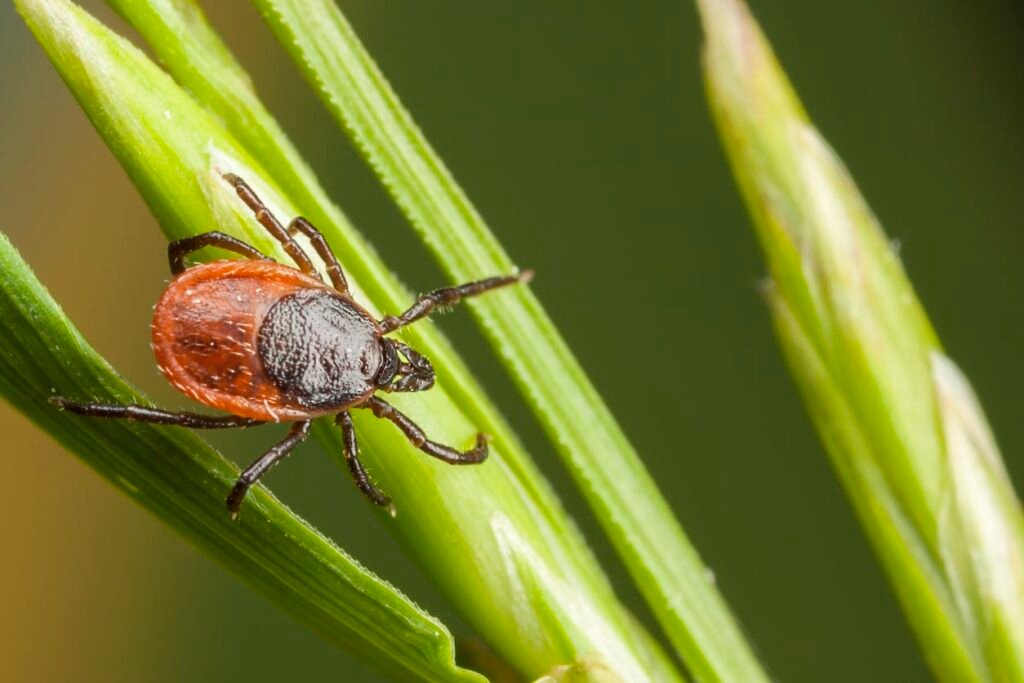
10. Sand Fly
Sand flies or biting midges are the smallest of the blood-feeding flies and are often golden, brownish, or grey colored.
These flies are also blood feeders, and the bites can be painful. They can become very itchy too and develop into weepy blisters that persist for several days. Resist the temptation to scratch the area as this may lead to infection.
Sand flies are more active in the morning and night.
11. Amazonian Giant Centipede
This centipede is one of the most dangerous bugs in the Dominican Republic! In fact they look like they have come straight from a nightmare and can measure up to 25cm long.
This carnivorous creature can be found in many places in the world and is known to kill and eat other vertebrates. These centipedes have pincer fangs that can inject neurotoxic venom, and they use this venom to paralyze and kill their prey.
Although the bites are not fatal to humans (unless alergic), they can be excruciatingly painful. You might also get swelling in the area alongside pain. It’s recommended to seek immediate medical attention if you get bitten by these horrifying Dominican Republic bugs.
While exploring the wilds of the Dominican Republic, keep an eye out for this Amazonian Giant Centipede and avoid them at all costs!

12. Hispaniolan Giant Tarantula
This arachnid is native to the Caribbean and while huge, it’s rarely harmful to humans.
These spiders have fangs which it uses to inject venom and paralyze its prey. The venom breaks down the internal body tissue of the prey, turning it into a liquid meal for this tarantula.
There is no need to worry though as these tarantulas rarely bite humans. And any bite would only usually cause swelling and irritation – although as always, we think you should get any new bug bite looked at by a doctor.
It’s unlikely you’ll see one of these tarantulas during the day as they usually hunt at night for their prey. If you want to know more information about spiders in the Dominican Republic, check out this article.

13. Scorpion
Scorpions are everywhere in the world, but this island hosts 45 species of them, of which 42 are endemic.
The tail end of a scorpion has a sting that releases venom into the prey which then paralyzes it. They also use this tail to protect themselves.
Scorpions usually thrive under stones, logs, leaf litter, or hide in dark corners. There is a high chance that you are going to encounter one of these on your vacation. The sting of a scorpion is rarely fatal (but do get it checked out by a doctor), however it can be very painful. If you see a scorpion, just leave them alone.

14. Violin Spider
The violin spider, also known as the brown recluse, can be classified as one of the most dangerous bugs in the Dominican Republic. This spider has cytotoxic venom that can cause severe injury or even death in young children and the elderly.
If that doesn’t scare you, its venom is 15 times more deadly than a cobra bite and ten times more potent than a burn with sulphuric acid. In fact the venom of this spider can even penetrate the liver and bile ducts.
The spider, also known as the corner spider, tends to dwell in dark places but is at least shy and passive. So don’t worry about them coming out at night to try and get you.
However, do shake your clothes and towels before using them and check behind furniture if moving anything as these are places they could be hiding. If you are bitten, seek out immediate medical help.
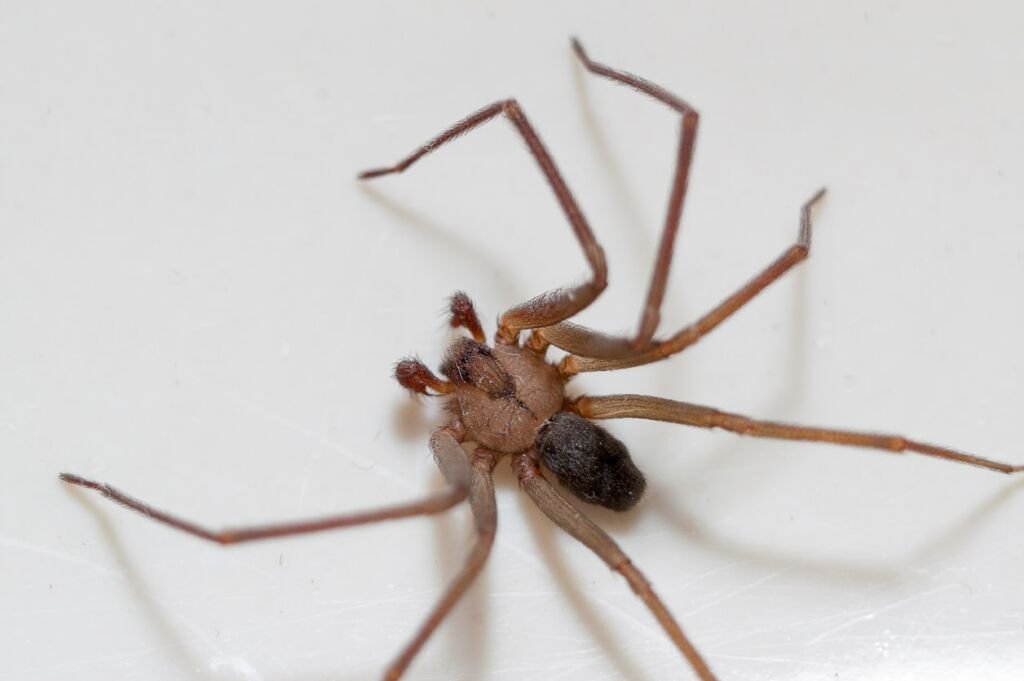
15. The Black Widow And Brown Widow
The black widow and brown widow are two other spiders you really want to avoid while exploring this country. These spiders have special glands that produce a poison that is strong and extremely dangerous.
Out of the two, the black widow spider produces more toxin as it has larger glands, making it typically more dangerous than the brown widow spider.
Although they are both poisonous spiders, they are also shy. So you may not see them unless you seek them out, which would be a very bad idea. If bitten by these Dominican Republic insects, get immediate medical help.
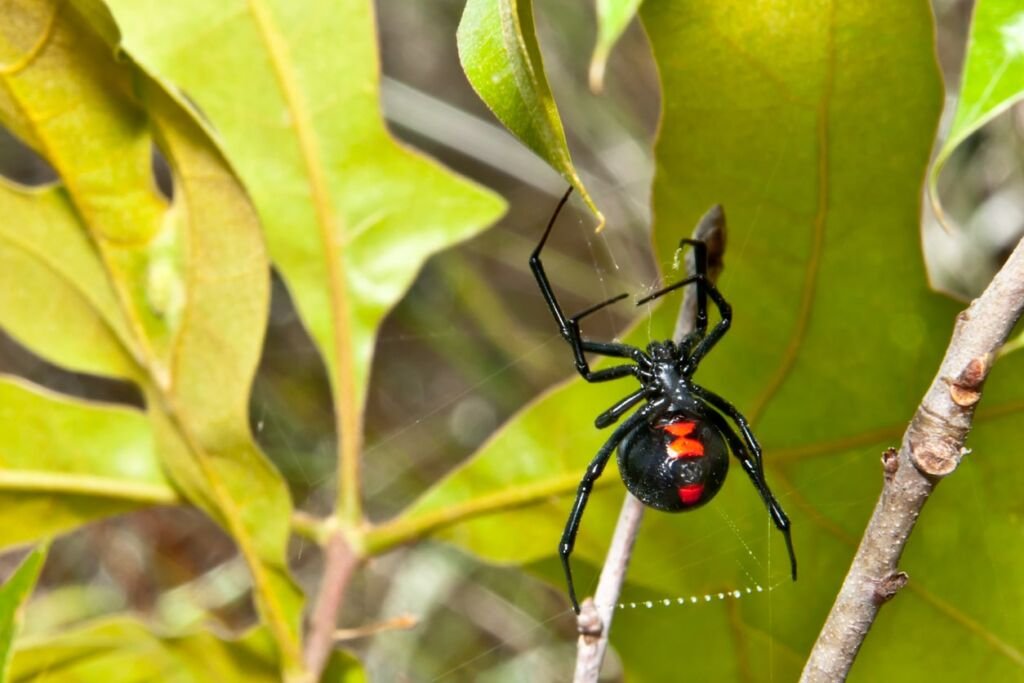
16. Cane Toad
The cane toad was brought to the Dominican Republic from Central America as pest control in sugar cane plantations.
The frog, when feeling threatened, releases a very potent poison from the glands behind its eyes and back.
The poison is dangerous to humans and can lead to organ failure and narcosis. The cane toad is one of the most dangerous creatures in the Dominican Republic, so you must keep an eye out for them.

17. Kissing Bugs
Kissing bugs are tiny Dominican Republic bugs that bite, and are also known as vampire bugs. They are only ½ to one one inch long with brown or black wings. These bugs mostly bite around the eyes and mouth, hence the name kissing bug.
While most bites are harmless, some people may experience allergic reactions to the bite. There may be 2-15 bite marks in one area, followed by redness and swelling.
Kissing bugs are also known to spread Chagas disease as they carry a parasite that causes the disease. Although it is very rare, cases have been reported where humans have contracted Chagas disease from kissing bugs.
Packing an anti-itch lotion would be highly beneficial in case you run into any of these bugs.
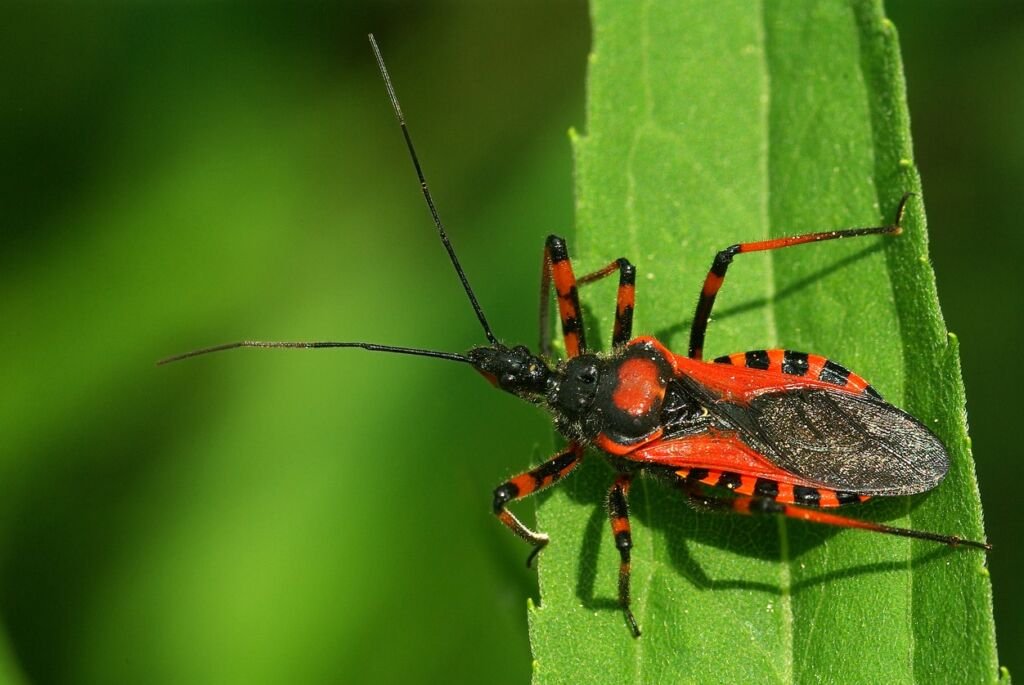
18. Sea Urchins
Before you set out on a trip to any Caribbean country, it is good to know about the dangerous marine life that exists there.
Among them, sea urchins are one of the most dangerous animals in the country. They are commonly spotted on the beaches of Boca Chica and Juan Dolio near Santo Domingo. But can be found anywhere.
Sea urchins are small, spiny, and round. They come in different colors, making them some of the most visible and fascinating sea animals. However they have long sharp spines that are sharp enough to pierce human flesh and cause wounds.
The spines sometimes tend to break off, making it more challenging to extract them from the skin. Chronic pain and inflammation follow if the spine is not removed.
Although the venom of sea urchins is not fatal, some people may get an allergic reaction to the poison. So it could be worth seeing a doctor if you step on one.
So be careful not to step on them while walking along the beach. Although they are usually found in rocky areas of beach.

19. Leeches
Leeches are another horrible bloodsucking creature you need to be on the lookout for in the Dominican Republic. They are common everywhere, and you might already have encountered them during your hiking adventures.
Leech bites are mostly harmless, although some people may suffer bruising, redness, and itching.


